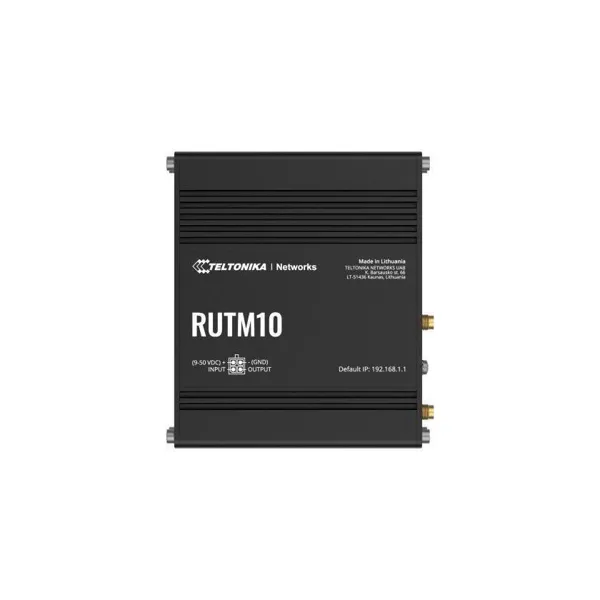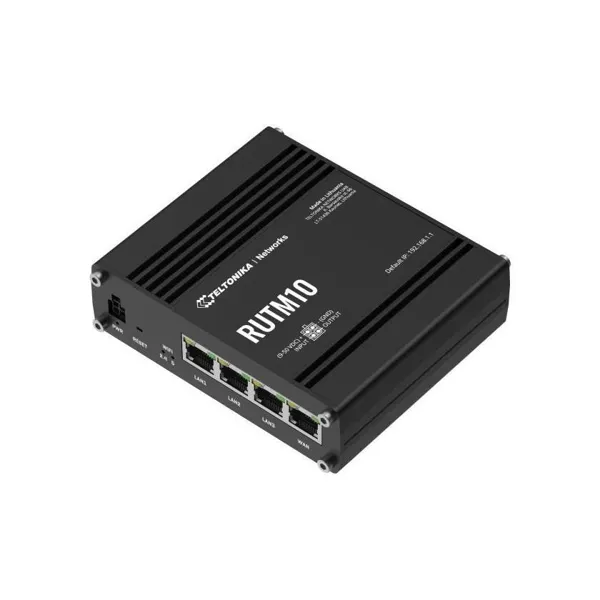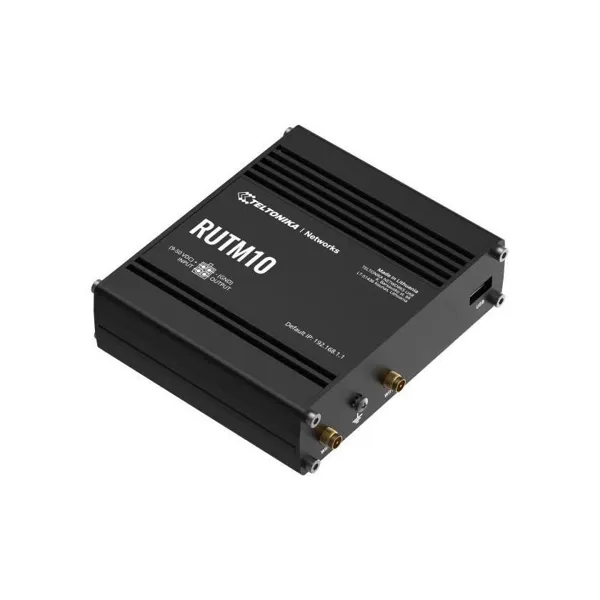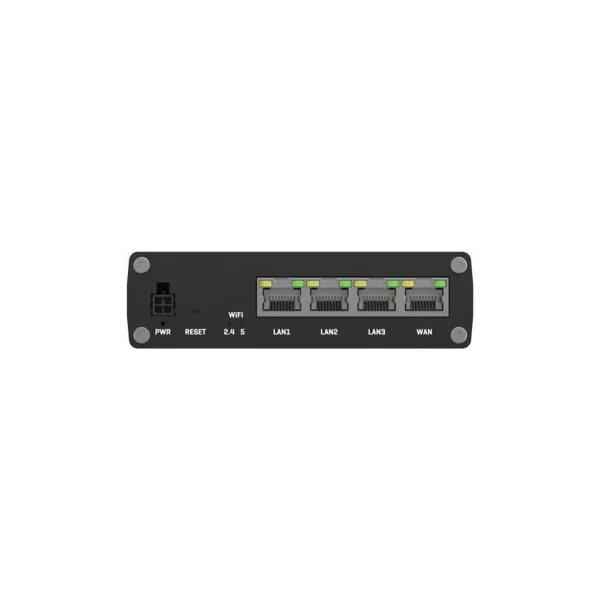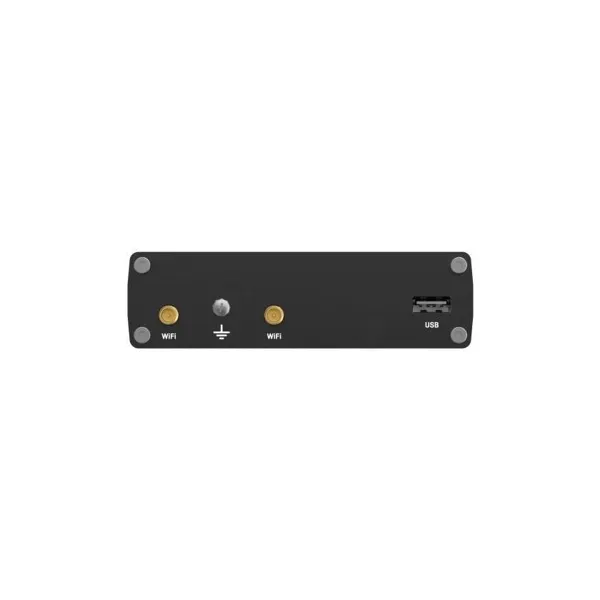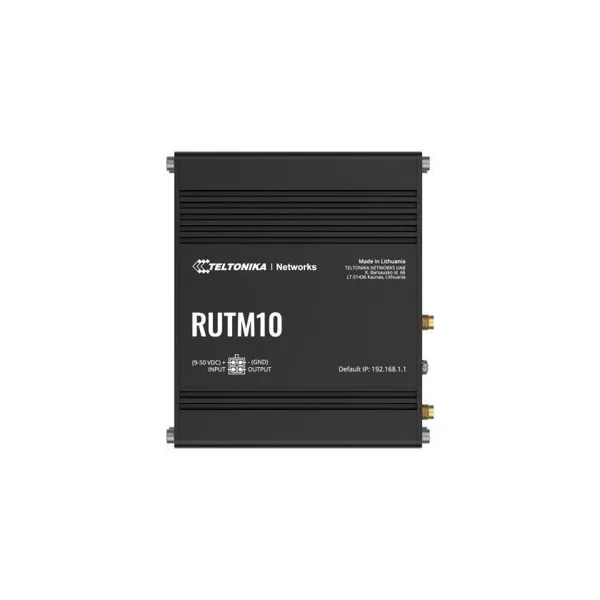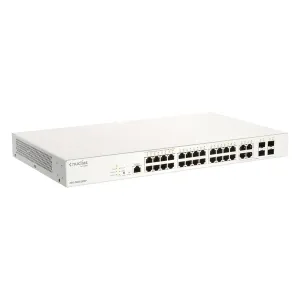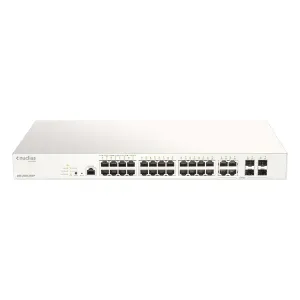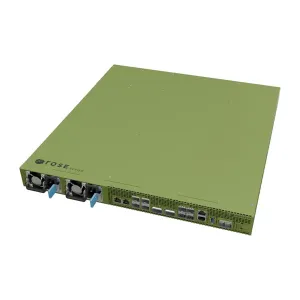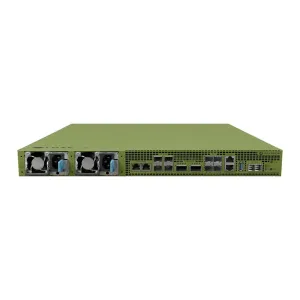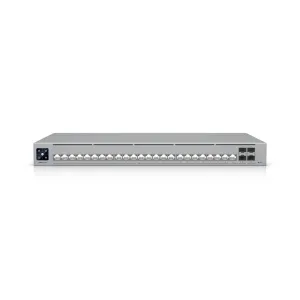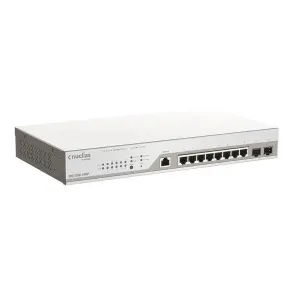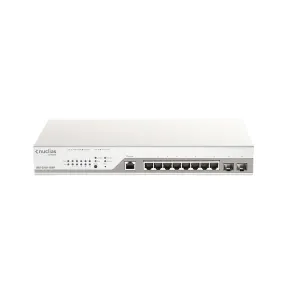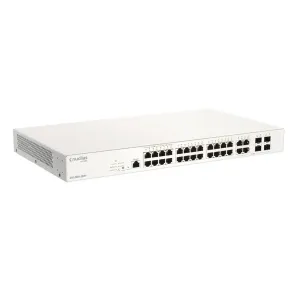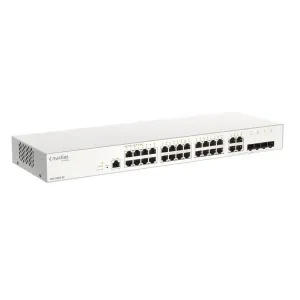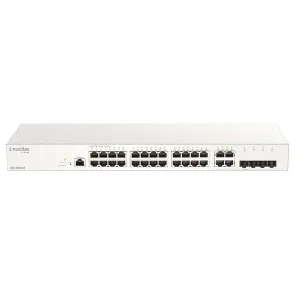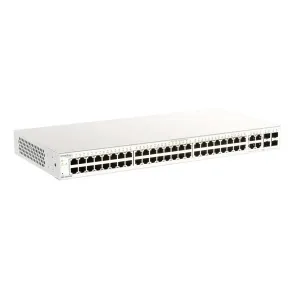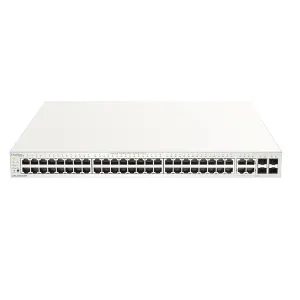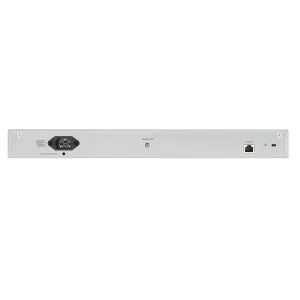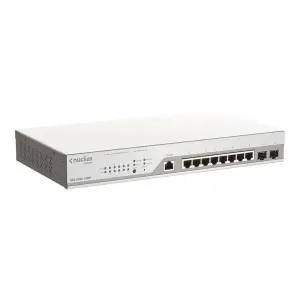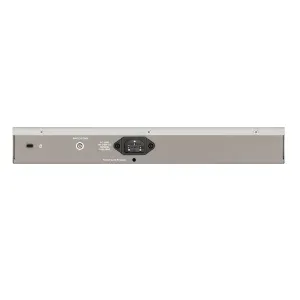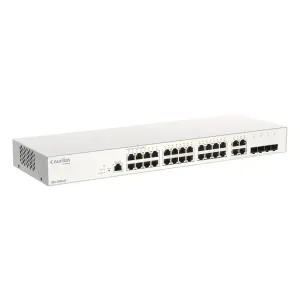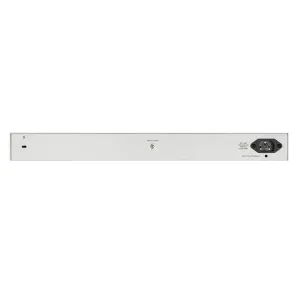Teltonika – RUTM10 – WLAN router, 4 Gigabit RJ45 ports, Wi-Fi 5 connectivity options
incl. 19% VAT plus shipping costs
The RUTM10 is a wired router with four Gigabit RJ45 ports and Wi-Fi 5 connectivity options. This makes it ideal for applications that require both wired connections and a wireless access option for Internet access. The RUTM10 can set up a Wi-Fi mesh…
| SKU | 390705 |
|---|---|
| EAN | 4779051840489 |
| MPN | RUTM10 |
| Categories | Networking, Routers & Switch |
| Tags | Networking, Router, Teltonika, wireless router |
The RUTM10 is a wired router with four Gigabit RJ45 ports and Wi-Fi 5 connectivity options. This makes it ideal for applications that require both wired connections and a wireless access option for Internet access. The RUTM10 can set up a Wi-Fi mesh network within your network solutions, enabling a smoother and more robust wireless network experience that is highly secure thanks to the router’s support for VPNs such as OpenVPN, IPsec, Wireguard and Tailscale.
WIRELESS
– Wireless mode: 802.11b/g/n/ac Wave 2 (WiFi 5) with data transfer rates up to 867 Mbps (dual band, MU-MIMO), 802.11r Fast Transition, Access Point (AP), Station (STA)
– Wi-Fi security: WPA2-Enterprise – PEAP, WPA2-PSK, WPA-EAP, WPA-PSK, WPA3-SAE, WPA3-EAP, OWE; AES-CCMP, TKIP, auto-cipher modes, client separation, EAP-TLS with PKCS#12 certificates, deactivation of Auto-Reconnect
– SSID/ESSID: ESSID stealth mode
– Wi-Fi users: Up to 150 simultaneous connections
– Wireless connectivity features: Wireless Mesh (802.11s), Fast Roaming (802.11r), BSS Transition Management (802.11v), Radio Resource Metering (802.11k)
– Wireless MAC Filter: Whitelist, Blacklist
– Wireless QR Code Generator: Once scanned, a user is automatically let into your network without having to enter any credentials.
ETHERNET
– WAN: 1 x WAN port 10/100/1000 Mbps, compliance with IEEE 802.3, IEEE 802.3u, 802.3az standards, supports Auto-MDI/MDIX crossover
– LAN: 3 x LAN ports, 10/100/1000 Mbps, compliance with IEEE 802.3, IEEE 802.3u, 802.3az standards, supports Auto-MDI/MDIX crossover
NETWORK
– Routing: Static routing, dynamic routing (BGP, OSPF v2, RIP v1/v2, EIGRP, NHRP), policy-based routing
– Network protocols: TCP, UDP, IPv4, IPv6, ICMP, NTP, DNS, HTTP, HTTPS, SFTP, FTP, SMTP, SSL/TLS, ARP, VRRP, PPP, PPPoE, UPNP, SSH, DHCP, Telnet, SMPP, SNMP, MQTT, Wake On Lan (WOL)
– VoIP passthrough support: H.323- and SIP-alg protocol NAT helpers that enable the correct routing of VoIP packets
– Connection monitoring: Ping reboot, Wget reboot, periodic reboot, LCP and ICMP for link inspection
– Firewall: Port forwarding, traffic rules, user-defined rules
– Firewall status page: Display all firewall statistics, rules and rule counters
– Ports management: display device ports, enable and disable individual ports, enable or disable automatic configuration, change transmission speed, etc.
– Network topology: Visual representation of your network showing which devices are connected to which other devices
– DHCP: Static and dynamic IP assignment, DHCP relay, DHCP server configuration, status, static leases: MAC with wildcards
– QoS / Smart Queue Management (SQM): Traffic priority queuing by source/destination, service, protocol or port, WMM, 802.11e
– DDNS: Supports >25 service providers, others can be configured manually
– Network backup: Wi-Fi WAN, VRRP, wired options, any of which can be used as automatic failover
– Load balancing: Balancing Internet traffic across multiple WAN connections
– Hotspot: Captive portal (hotspot), internal/external Radius server, Radius MAC authentication, SMS authorisation, internal/external landing page, walled garden, user scripts, URL parameters, user groups, individual user or group restrictions, user management, 9 default customisable themes and the ability to upload and download custom hotspot themes
– SSHFS: Ability to mount remote file systems via the SSH protocol
– VRF support: first support for virtual routing and forwarding (VRF)
SECURITY
– Authentication: pre-shared key, digital certificates, X.509-certificates, TACACS+, Radius, blocking of IP and login attempts, time-based login blocking, built-in random password generator
– Firewall: Pre-configured firewall rules can be activated via WebUI, unlimited firewall configuration via CLI; DMZ; NAT; NAT-T
– Attack protection: DDOS protection (SYN flood protection, SSH attack protection, HTTP/HTTPS attack protection), port scan protection (SYN-FIN, SYN-RST, X-mas, NULL flags, FIN scan attacks)
– VLAN: Port and tag-based VLAN separation
– WEB filter: blacklist for blocking unwanted websites, whitelist for specifying only permitted websites
– Access control: flexible access control of SSH, web interface, CLI and Telnet
VPN
– OpenVPN: multiple clients and a server can run simultaneously, 27 encryption methods
– OpenVPN encryption: DES-CBC 64, RC2-CBC 128, DES-EDE-CBC 128, DES-EDE3-CBC 192, DESX-CBC 192, BF-CBC 128, RC2-40-CBC 40, CAST5-CBC 128, RC2-64-CBC 64, AES-128-CBC 128, AES-128-CFB 128, AES-128-CFB1 128, AES-128-CFB8 128, AES-128-OFB 128, AES-128-GCM 128, AES-192-CFB 192, AES-192-CFB1 192, AES-192-CFB8 192, AES-192-OFB 192, AES-192-CBC 192, AES-192-GCM 192, AES-256-GCM 256, AES-256-CFB 256, AES-256-CFB1 256, AES-256-CFB8 256, AES-256-OFB 256, AES-256-CBC 256
– IPsec: IKEv1, IKEv2, with 14 encryption methods for IPsec (3DES, DES, AES128, AES192, AES256, AES128GCM8, AES192GCM8, AES256GCM8, AES128GCM12, AES192GCM12, AES256GCM12, AES128GCM16, AES192GCM16, AES256GCM16)
– GRE: GRE tunnels, GRE tunnels via IPsec support
– PPTP, L2TP: client/server instances can run simultaneously, L2TPv3, L2TP via IPsec support
– Stunnel: proxy for adding TLS encryption functionality to existing clients and servers without changes to the programme code
– DMVPN: Method for building scalable IPsec VPNs
– SSTP: Support for SSTP client instances
– ZeroTier: ZeroTier VPN client support
– WireGuard: WireGuard VPN client and server support
– Tinc: Tinc provides encryption, authentication and compression in its tunnels. Client and server support.
– Tailscale: Tailscale offers speed, stability and simplicity over traditional VPNs. Encrypted point-to-point connections using the WireGuard open source protocol
OPC UA
– Supported modes: Client, Server
– Supported connection types: TCP
MODBUS
– Supported modes: Server, Client
– Supported connection types: TCP, USB
– User-defined registers: MODBUS TCP user-defined register block requests that can be read/written to a file within the router and used to extend MODBUS TCP client functionality
– Supported data formats: 8-bit: INT, UINT; 16-bit: INT, UINT (MSB or LSB first); 32-bit: float, INT, UINT (ABCD (big-endian), DCBA (little-endian), CDAB, BADC), HEX, ASCII
DATATO SERVER
– Protocol: HTTP(S), MQTT, Azure MQTT
– Data to server: Extracts parameters from multiple sources and different protocols and sends them all to a single server
MQTTGATEWAY
– Modbus MQTT Gateway: Enables commands to be sent and data to be received from the MODBUS server via the MQTT broker
DNP3
– Supported modes: station, outstation
– Supported connections: TCP, USB
DLMS
– DLMS support: DLMS – Standard protocol for exchanging meter data
– Supported modes: Client
– Supported connection types: TCP, USB
API
– Support for Teltonika Networks Web API (beta): Extend the capabilities of your device by using a range of configurable API endpoints to retrieve or modify data. For more information, see this documentation: https://developers.teltonika-networks.com
MONITORING & MANAGEMENT
– WEB UI: HTTP/HTTPS, status, configuration, FW update, CLI, troubleshooting, multiple event log servers, availability notifications for firmware updates, event log, system log, kernel log, internet status
– FOTA: Firmware update from server, automatic notification
– SSH: SSH (v1, v2)
– Email: Email notification of the status of various services
– TR-069: OpenACS, EasyCwmp, ACSLite, tGem, LibreACS, GenieACS, FreeACS, LibCWMP, Friendly tech, AVSystem
– MQTT: MQTT Broker, MQTT Publisher
– SNMP: SNMP (v1, v2, v3), SNMP Trap
– JSON-RPC: Management API via HTTP/HTTPS
– RMS: Teltonika Remote Management System (RMS)
IOTPLATFORMS
– Cloud of Things: Enables monitoring of: Device name, HW version, serial number, FW version, WAN IP. Enables actions from the cloud: FW update, restart
– Cumulocity: Enables monitoring of: Device name, HW version, serial number, FW version, WAN IP. Enables actions from the cloud: FW update, restart
– Azure IoT Hub: Enables monitoring of: Wan IP, number of bytes sent/received, model, manufacturer, serial number, revision, FW version and collected data from industrial devices
SYSTEM SPECIFICATIONS
– CPU: MediaTek, dual-core, 880 MHz, MIPS1004Kc
– RAM: 256MB, DDR3
– FLASH memory: 16MB serial NOR flash, 256MB serial NAND flash
FIRMWARE/ CONFIGURATION
– WEB UI: Update FW from file, check FW on server, configuration profiles, configuration backup
– FOTA: Update FW
– RMS: Update FW/configuration for multiple devices at once
– Maintain settings: Update FW without losing the current configuration
– Reset factory settings: A full factory reset restores all system settings, including IP address, PIN and user data, to the manufacturer’s default configuration
FIRMWARECUSTOMISATION
– Operating system: RutOS (OpenWrt based Linux OS)
– Supported languages: Busybox shell, Lua, C, C++
– Development tools: SDK package with build environment provided
– GPL customisation: you can create your own custom firmware and website application by changing colours, logos and other elements in our firmware to suit your needs or those of your customers
USB
– Data rate: USB 2.0
– Applications: Samba sharing, USB-to-serial
– External devices: possibility to connect an external hard drive, a flash drive, an additional modem, a printer, a USB-to-serial adapter
– Storage formats: FAT, FAT32, exFAT, NTFS (read-only), ext2, ext3, ext4
INPUT / OUTPUT
– Input: 1 x digital input, 0 – 6 V are recognised as logic low, 8 – 50 V are recognised as logic high
– Output: 1 x digital output, open collector output, max. output 50 V, 300 mA
– Events: Email, RMS
– I/O juggler: Allows specific I/O conditions to be set to trigger events
POWER
– Connection: 4-pin industrial DC socket
– Input voltage range: 9 – 50 VDC, reverse polarity protection, overvoltage protection >51 VDC 10us max
– PoE (passive): Power supply option via LAN1 port, not compatible with IEEE802.3af, 802.3at and 802.3bt, mode B, 9 – 50 VDC
– Power consumption: Idle: < 3.51 W, Max: < 8.65 W
PHYSICAL INTERFACES
– Ethernet: 4 x RJ45 ports, 10/100/1000 Mbps
– I/Os: 1 x digital input, 1 x digital output on 4-pin power connector
– Status LEDs: 8 x LAN status, 1 x power LED, 2 x 2.4G and 5G Wi-Fi LEDs
– Power supply: 1 x 4-pin power connector
– Antennas: 2 x RP-SMA for Wi-Fi
– USB: 1 x USB-A port for external devices
– Reset: Restart/user default reset/factory reset button
– Miscellaneous: 1 x earthing screw
PHYSICAL SPECIFICATIONS
– Housing material: anodised aluminium housing and plates
– Dimensions (W x H x D): 115 x 32.2 x 95.2 mm
– Weight: 359 g
– Mounting options: DIN rail, wall mounting, flat surface (all require additional kit)
OPERATING ENVIRONMENT
– Operating temperature: -40 °C to 75 °C
– Operating humidity: 10 % to 90 % non-condensing
– Protection class: IP30
REGULATORY & TYPE APPROVALS
– Regulatory: WEE
EMC EMISSIONS & IMMUNITY
– Standards: EN 55032:2015 + A11:2021, EN 55035:2017 + A11:2020, EN IEC 61000-3-2:2019 + A1:2021, EN 61000-3-3:2013 + A1:2019 + A2:2021, EN 301 489-1 V2.2.3, EN 301 489-3 V2.1.1, EN 301 489-17 V3.2.4, EN 301 489-52 V1.2.1
– ESD: EN 61000-4-2:2009
– Radiation immunity: EN IEC 61000-4-3:2020
– EFT: EN 61000-4-4:2012
– Immunity to overvoltages (AC mains connection): EN 61000-4-5:2014 + A1:2017
– CS: EN 61000-4-6:2014
– DIP: EN IEC 61000-4-11:2020
RF
– Standards: EN 301 908-1 V15.2.1, EN 301 908-2 V13.1.1EN 301 908-13 V13.2.1, EN 300 328 V2.2.2, EN 301 893 V2.1.1, EN 300 440 V2.2.1
SAFETY
– Standards: CE: EN IEC 62368-1:2020 + A11:2020, EN IEC 62311:2020, RCM: AS/NZS 62368.1:2022, CB: IEC 62368-1:2018
| Weight | 0,4 kg |
|---|---|
| Dimensions | 12 × 10 × 4 cm |
| switch control | webmanaged |
| Connections | RJ45 |
| Produkttyp | Router |
| Color | black |
| SFP Ports | 0 |
| max. network transfer rate | 1 Gigabit |
| Number of Gigabit ports | 4 |
| Ethernet-Ports | 4 |
| type | Router, wireless router |
Product safety
Manufacturer information
UAB “TELTONIKA IoT GROUP”
Ditvos g. 6
02121 Vilnius
LT - Lithuania
E-Mail: info@teltonika-networks.com
Person responsible for the EU
UAB “TELTONIKA IoT GROUP”
Ditvos g. 6
02121 Vilnius
LT - Lithuania
E-Mail: info@teltonika-networks.com
The name Teltonika for a reliable brand in the development and manufacture of mobile and wireless telecommunication devices. The company specializes primarily in the development of 3G and 4G routers for industrial use as well as hardware for fleet management and vehicle tracking.

